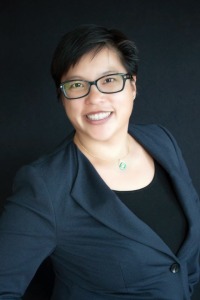Economic Development
Economic development is a focal point for Sechelt electorates during this campaign season. Each mayoral candidate in the District of Sechelt offer 3 different perspectives on the same issue. Before moving forward with some of my ideas regarding economic development, I would like to mention that other factors such as affordable housing, transportation, and childcare also need to be addressed concurrently at the municipal level in collaboration with other jurisdictions, partnerships, and levels of government to find viable solutions that are aligned to community values. According to Vital Signs 2014, 99% of businesses on the Sunshine Coast employ less than 20 employees. Small businesses are a strength of the Sunshine Coast and contributes to our local economy and survival. Encouraging and supporting small businesses to emerge and flourish will in turn result in jobs, unique entrepreneurial opportunities, and local economic growth. Dream a bit bigger… we might be manufacturing, drawing business to Sechelt and the Sunshine Coast, and exporting goods. With this direction, keeping money local and investing local would be a priority.
For the District of Sechelt, I see three viable opportunities to provoke the local economy in a positive way.
1. Education and Training:
As mentioned at the 2014 shishalh nation business forum, education is an underpinning to economic growth. Partnering with Capilano University and other educational institutions to identify, endorse, and support educational programs that would address the employment needs of our community such as health care, trades, and early childhood education, would increase the skill set of our community members, meet employment demands, and create opportunities to have jobs earning a living wage. If Capilano University thrives, other post secondary institutions would be attracted to come to Sechelt and the Sunshine Coast as a viable location to host other post-secondary programs. Another educational opportunity would be for small businesses. Hosting workshops, seminars, or networking groups at Capilano Univeristy or with other community partners such as the Sechelt Chamber Commerce, Community Futures, or FUSE in order to help emerging and currently operating small businesses to understand the District bylaws, create a business plan, or plan to take the next step. When we invest in the social capital of our community, we are also contributing to our economic growth and welfare.
2. Social Enterprise
There are multiple models of social enterprise but it is the opportunity of small businesses to thrive but also give back and work with the community. I would like to highlight two examples. The first example is Persephone’s Brewing and Sunshine Coast Community Living (SCACL). Persephone’s is a microbrewery located in Gibsons. Much like many small businesses, Persephone’s started from a vision and built with love and passion. They grow their own hops, produce their own beer, and serve the fruits of their labour on site. Persephone’s is community oriented and thrive on the kindness and help of its patrons community members. Furthermore, Persephone’s is a social enterprise. SCACL are share holders of Persephone’s, Persephone’s employ SCACL advocates, and SCACL advocates sit on the Persephone’s Board. Persephone’s is invested in the community and SCACL is invested in Persephone’s in return. It’s a reciprocated relationship and both organizations mutually benefit. The second example is Salish Soils. Another local business based on a dream and with the help of various community partners is thriving. As Salish Soils flourishes, they give back to the community by contributing dirt to various community gardens so that the community itself flourishes. Social enterprise is the opportunity for businesses to grow, create a profit, but also give back to the community to build the community.
3. Community Investments
According to Vital Signs, our dependent population is increasing. This population represents those under the age of 18 and over the age of 55. I can see why this would be when the Globe and Mail identified Sechelt as #2 out of 7 places as best place to retire. With the selling points of condo living, purchasing housing in the mid-300’s with money to spare, and coastal living… one can assume that the clientele choosing to retire in Sechelt can afford to. Much like Powell River, Sechelt will have a significant portion of it’s population on a pension with a retirement savings. How can this group invest in Sechelt to support it’s local economy? In Powell River, one initiative is known as a community investment fund where community members can re-invest their savings/mutual funds back in the community. With the community investment fund, investors will gain a return from their investment and the community will collect a significant amount money from various investors to build or initiate local economic development projects that supports emerging entrepreneurs and small business development. In essence, this is a win-win situation where investors gain a return and those looking for funds to create economic development initiatives can to create local economic growth.
The big idea… when we invest in ourselves… we invest in our community... thus, we invest in our local economy.
